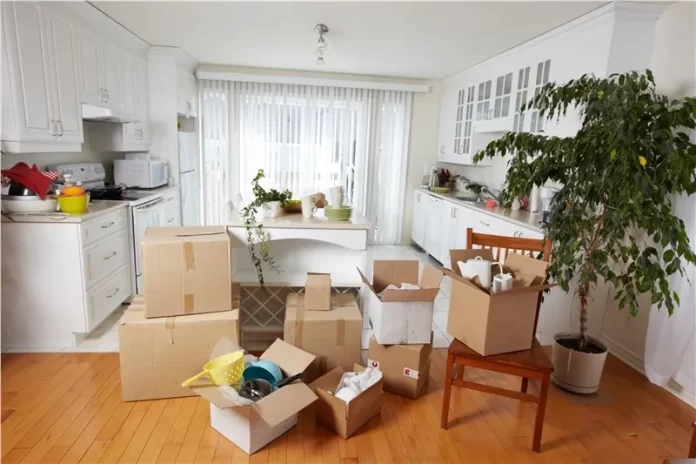So, you’ve rented a storage container for your move, and it’s time to pack up your kitchen. It can be a big task! Kitchens are filled with fragile items, heavier appliances, and various odds and ends that must be packed carefully to ensure they arrive at your new home intact.
Ensure your kitchen items are packed securely in your storage container and arrive safely at your new home. Proper planning and attention to detail will protect your kitchenware during the move and save you time and effort in unpacking and settling into your new space. Happy moving!
Here’s a step-by-step guide to help pack your kitchen, making your move more manageable and stress-free.
Gather Your Supplies
Gather the necessary packing supplies: these will make the packing process smoother. Start by acquiring sturdy cardboard boxes in various sizes to accommodate different items. Packing tape is necessary to seal the boxes securely, and consider using bubble wrap, paper towels, or packing paper for fragile dishes, glassware, and cookware.
Don’t forget packing materials such as foam packing peanuts or newspaper to fill spaces inside the boxes. Labels and markers will come in handy so you can easily identify the contents of each box. And finally, a reliable dolly can make loading your belongings into the storage container more efficient.
Sort and Declutter
Before you start packing, go through your kitchen items and declutter. Begin by going through each cabinet, drawer, and pantry shelf, discarding expired or unused items. Donate or dispose of duplicates, damaged goods, or things you seldom use.
Assess the necessity of your small appliances, utensils, and cookware, keeping only what you truly need. This ensures that you’ll only transport items that truly belong in your new kitchen, making unpacking and settling into your new home much more manageable.
Fragile Items
Packing fragile items properly is essential to prevent breakage. Begin by wrapping delicate items like glassware, dishes, and stemware in bubble wrap or packing paper layers. Use cardboard dividers or cell kits designed for glassware to keep items separated and cushioned.
Place these items in small, sturdy boxes for extra protection, ensuring they fit snugly and don’t shift during transportation. Use padding materials like foam or packing peanuts to fill any box gaps. Clearly label the boxes as “fragile” and “this side up” so anyone who handles the box knows its contents. Packing fragile items last in the storage container to reduce the risk of stacking heavier items on top.
Small Appliances
When packing small kitchen appliances, start by cleaning and drying each device. Disassemble removable parts and wrap them separately. Wrap the machine in bubble wrap or foam to protect it.
Place each item in its original box, if you still have it, or use appropriately sized boxes, and include the instructions for reassembly if necessary. Fill empty spaces in with packing paper or bubble wrap to prevent shifting. Close the boxes and secure them with packing tape.
Utensils and Cutlery
Start by sorting and organizing all your utensils and cutlery into categories. Place knives, forks, spoons, and other utensils in separate, sturdy plastic or cardboard containers or wrap them in bundles using rubber bands, tape, or twine. Wrap sharp items like knives individually in paper or bubble wrap to prevent injury when unpacking them.
Place the bundled utensils and cutlery in appropriate-sized boxes. Fill any extra space with paper to avoid shifting, and label the boxes clearly to identify the contents.
Pantry Items
If you’ve followed the steps outlined in this article, you have already decided which foodstuffs will be donated and which will be moved to your new home. Use sturdy, sealed containers or boxes for non-perishable items like canned goods, grains, and spices. Grouping similar items will make unpacking easier. Ensure containers are tightly sealed to prevent spills during transport.
For perishables, try to consume them before the move. You may want to pack a separate box with essential non-perishables for immediate use upon arrival in your new home. Clearly label the boxes to identify that they contain pantry items and ensure they are stored in a dry, cool area during transportation to preserve their quality.
Cookware and Bakeware
When packing your cookware and bakeware, thoroughly clean each item first. Stack pots and pans in sets, placing a layer of packing paper or a dish towel between them to prevent scratches. Nest smaller pots and pans inside larger ones to save space.
Wrap bakeware such as baking sheets and casserole dishes individually in bubble wrap or packing paper, and pack any corresponding lids in the same box. Cookware and bakeware can be heavy, so pack them in sturdy boxes, filling gaps with packing material to minimize movement during transport.
















